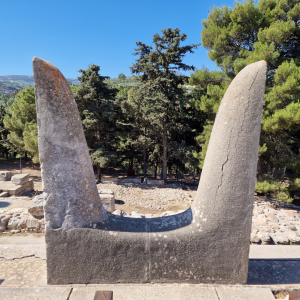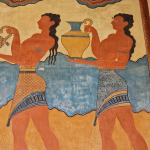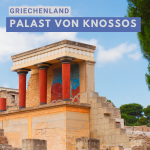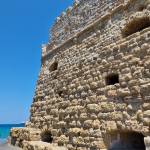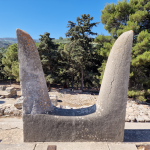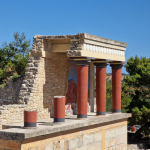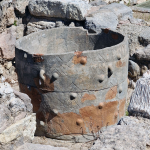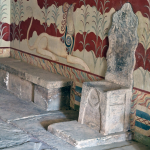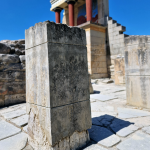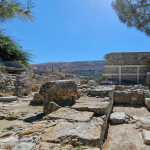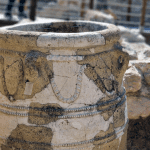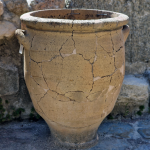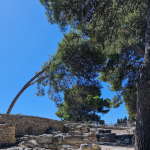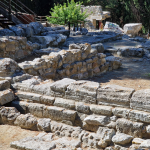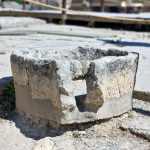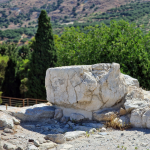The Minoan culture was one of the earliest and most impressive civilizations of ancient Greece. Named after the legendary King Minos, who figures prominently in Greek mythology, the Minoan culture spanned the Crete island and peaked around 2000 B.C. to 1400 BC It was notable for its advanced architecture, art, commerce, and social structures.
Here are some important aspects of Minoan culture
- Architecture and urban planning: The Minoans were known for their impressive palaces and buildings. The Palace of Knossos is the most famous example. These palaces were complex buildings with winding corridors, multiple levels, frescoes and impressive columns. The construction was so advanced that they were described as "labyrinths" until modern times.
- Arts and crafts: Minoan art was characterized by great sophistication. Frescoes depicting scenes from daily life, mythology and nature motifs have been found in the palaces and other buildings. The Minoans were also known for their pottery, jewelry, and metalworking. They used a wide range of colors and styles to create their artwork.
- Language and writing: The Minoan script, known as Linear A and Linear B, has been found on clay tablets and other materials. Although the script has not yet been fully deciphered, it has provided insight into aspects of Minoan life and their administrative systems.
- Trade and seafaring: The location of Crete in the Mediterranean made it an important crossroads in trade between Europe, Asia and Africa. Skilled seafarers, the Minoans developed a thriving trading economy that enabled them to import and export exotic goods such as metals, gems, spices, and other commodities.
- Religion and Mythology: Minoan religion was closely related to nature and emphasized the worship of female deities. A well-known symbol of Minoan religion is the "snake goddess" symbol, which has been found in various forms on artifacts. The story of the Minotaur, a mythological creature with the head of a bull and the body of a human, is also closely linked to Minoan culture.
- Social structures: Minoan society was comparatively equal and had a wealthy middle class. Women seemed to play a more prominent role in society than in many other ancient cultures. This is supported by artwork and depictions of women in leading positions.
- Decline and disappearance: The exact reasons for the decline of the Minoan culture are not fully understood, but it is suspected that natural disasters such as volcanic eruptions and possibly political and economic factors may have contributed. The Minoan culture was eventually superseded by the Mycenaean culture in mainland Greece.
The Minoan culture left a rich legacy that has enriched our understanding of early Greek history and civilization. Their artistic and technological achievements are still impressive today and serve as a testament to the innovative skills and cultural diversity of the ancient world.

Passionate "phone clipper". Currently with mine Samsung Galaxy S22 Ultra. A great phone with XNUMX TB of storage. Lots of space for experiments. My favorite subjects are plants, Eat & drink, animals, Buildings and Landscapes.
Otherwise, I like to spend my time in nature and sometimes hang out on the PC, with a cozy round Civ or Star Citizen, away. A series is also often sought after on the couch in the evening.

